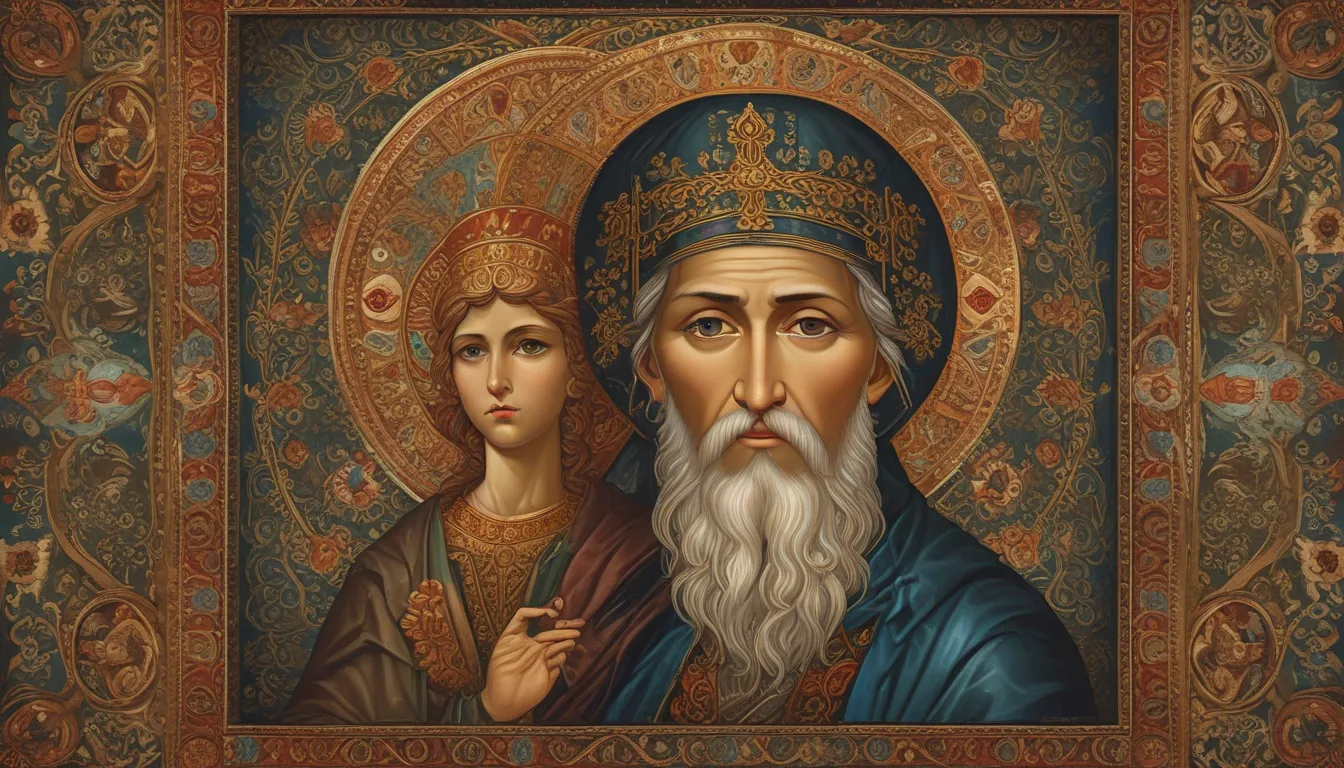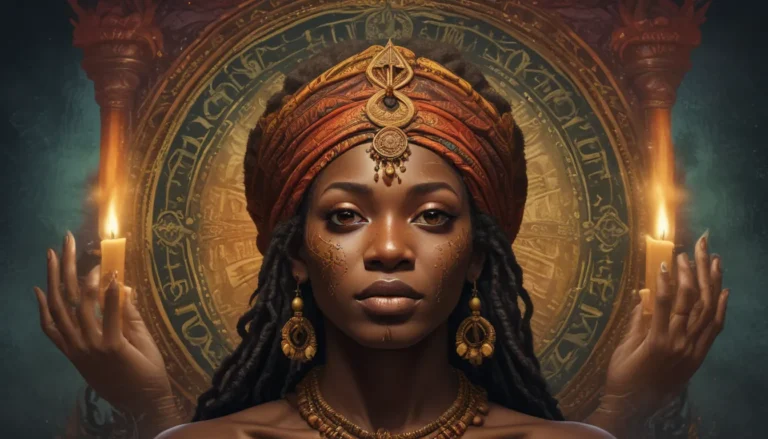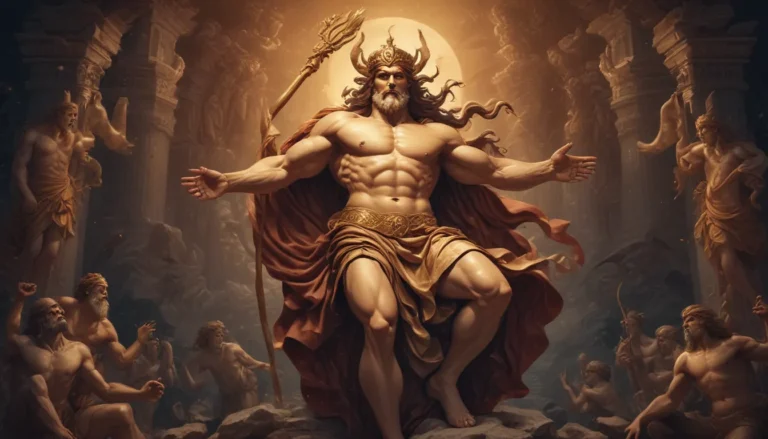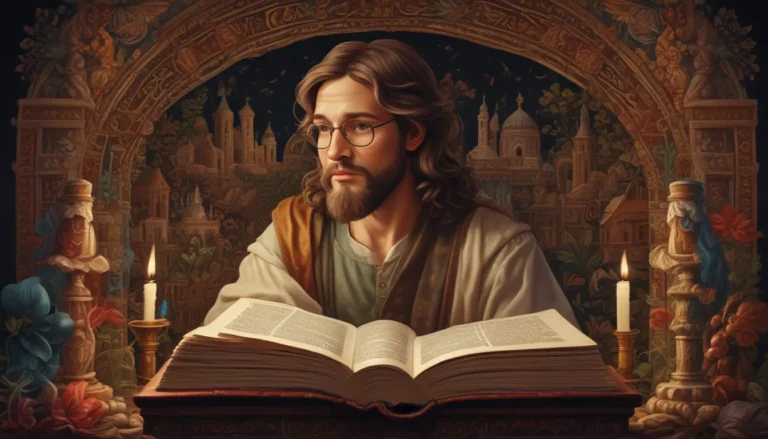The images in our articles may not match the content exactly. They are used to grab your attention, not to show the exact details in the text. The images complement the text but do not replace it.
Orthodox religion, with its profound history and deeply ingrained traditions, holds a significant place in the landscape of human spirituality. From its ancient origins to its lasting impact on culture and society, Orthodox religion encompasses a multitude of beliefs, practices, and customs that have influenced the lives of millions worldwide. In this comprehensive guide, we will delve into 15 intriguing facts about Orthodox religion, shedding light on its deep significance and timeless relevance.
Join us on a captivating journey through the annals of Orthodox religion as we uncover its foundational principles, historical milestones, and enduring influence. From the grandeur of its sacred rituals to the profound wisdom encapsulated in its teachings, Orthodox religion beckons us to explore its multifaceted tapestry of faith, devotion, and cultural heritage. Let’s embark on this enlightening exploration to gain a deeper understanding of Orthodox religion and the profound insights it offers to those who seek spiritual enlightenment and cultural enrichment.
Key Takeaways:
- Orthodox Christianity: Deeply rooted in the early Church, with rich traditions and a focus on theosis, emphasizing becoming more like God.
- Liturgical Tradition: The Orthodox Church is known for its rich and vibrant liturgical tradition, encompassing elaborate rituals, hymns, and symbolic gestures.
- Veneration of Icons: Icons hold a central place in Orthodox worship, serving as windows to the divine and facilitating a connection between worshippers and the heavenly realm.
- Emphasis on Tradition: Orthodox Christianity places a strong emphasis on tradition, viewing it as a safeguard for preserving authentic teachings and practices.
- Global Presence: Orthodox Christianity has a widespread global presence, spanning diverse geographical regions and communities around the world.
Orthodox Christianity Traces Its Origins to the Early Church
Orthodox Christianity’s roots can be traced back to the early Christian Church, with its doctrines and practices deeply entrenched in the traditions and teachings of the apostles and early Christian fathers. This historical connection lends a sense of continuity and authenticity to Orthodox faith and worship, serving as a cornerstone of its theological framework.
The Rich Liturgical Tradition of the Orthodox Church
The Orthodox Church is renowned for its rich and vibrant liturgical tradition, characterized by elaborate rituals, hymns, and symbolic gestures that create a deeply immersive worship experience. The liturgical calendar, with its cycle of feasts and fasts, forms an integral part of Orthodox spiritual life, providing a structure for communal worship and reflection.
Icons: Windows to the Divine in Orthodox Worship
Icons, sacred images of Christ, the Virgin Mary, and the saints, play a central role in Orthodox worship. These holy images are venerated as windows to the divine, serving as visual aids for prayer and contemplation. Icons are believed to facilitate a connection between the worshipper and the heavenly realm, fostering a sense of spiritual presence and reverence.
The Concept of Theosis in Orthodox Christianity
The concept of theosis, or divinization, holds a prominent place in Orthodox theology. It refers to the process of becoming more like God and attaining union with Him, embodying the transformative journey towards deification at the core of Orthodox spirituality. Theosis underscores the belief that humans are called to participate in the divine nature and be transformed by the grace of God.
The Great Schism of 1054: A Divisive Moment in Christian History
The Great Schism of 1054 marked a significant division between the Eastern Orthodox Church and the Roman Catholic Church, stemming from theological, cultural, and ecclesiastical differences. This event led to the formation of distinct Christian traditions with divergent practices and beliefs, shaping the course of Christian history and institutional development.
The Conciliar Model of Decision-Making in the Orthodox Church
The Orthodox Church operates on a conciliar model, where major decisions are made collectively by bishops, clergy, and laity in council gatherings. This synodal approach emphasizes the importance of consensus and communal discernment within the Church, reflecting a commitment to shared governance and unity in decision-making processes.
Mystical and Symbolic Elements of Orthodox Worship
Orthodox worship is characterized by its mystical and symbolic elements, designed to convey profound spiritual truths and evoke a sense of awe and reverence. The use of incense, candles, and intricate liturgical vestments contributes to the mystical ambiance of Orthodox services, enhancing the worship experience and fostering a deeper connection to the divine.
The Divine Liturgy: Central Act of Orthodox Worship
The Divine Liturgy, also known as the Eucharist or Holy Communion, holds a central place in Orthodox worship. This sacred service, replete with ancient prayers and rituals, commemorates the Last Supper and the sacrificial death of Christ, serving as a focal point for communal worship, spiritual nourishment, and the experience of divine presence.
The Rich Tradition of Monasticism in Orthodox Christianity
Orthodox Christianity has a strong tradition of monasticism, with monasteries serving as centers of spiritual life and ascetic practice. Monastics, including monks and nuns, dedicate themselves to a life of prayer, contemplation, and self-denial in pursuit of spiritual perfection, embodying a profound commitment to the pursuit of holiness and spiritual growth.
The Veneration of the Virgin Mary in Orthodox Tradition
The Orthodox Church holds a deep reverence for the Virgin Mary, honoring her as the Theotokos, or Mother of God. Mary’s exalted role in salvation history is celebrated through feasts, hymns, and devotional practices within Orthodox liturgical life, underscoring her significance as a central figure in Christian faith and devotion.
The Emphasis on Fasting in Orthodox Spirituality
Fasting plays a prominent role in Orthodox spirituality, with periods of fasting interspersed throughout the liturgical year. The practice of fasting is viewed as a means of spiritual discipline, self-control, and heightened attentiveness to the life of faith, enabling believers to cultivate inner stillness, humility, and a deeper connection to God.
The Distinctive Approach to Sacraments in Orthodox Christianity
Orthodox Christianity recognizes seven sacraments, including baptism, chrismation, the Eucharist, confession, holy unction, marriage, and ordination. These sacred rites are regarded as tangible means of divine grace and are administered with great reverence and solemnity, embodying the belief in the transformative power of sacramental life within the Orthodox tradition.
The Emphasis on Apophaticism in Orthodox Theology
Orthodox theology places a strong emphasis on apophaticism, a mystical approach that acknowledges the limitations of human language and understanding in describing the divine. This contemplative tradition values silence, mystery, and the ineffable nature of God, inviting believers to embrace a sense of awe, wonder, and humility in their theological reflections and spiritual practices.
The Global Presence of Orthodox Christianity
Orthodox Christianity has a widespread global presence, with adherents and communities spanning diverse geographical regions, including Eastern Europe, the Middle East, Africa, Asia, and the diaspora. This expansive reach underscores the enduring influence of Orthodox faith and tradition, highlighting the diverse cultural expressions and religious practices that characterize the global Orthodox community.
In conclusion, the Orthodox religion stands as a rich tapestry of tradition, history, and faith that has endured for centuries, shaping the lives and beliefs of countless individuals around the world. From its deep roots in ancient practices to its emphasis on spiritual growth and community, Orthodox Christianity continues to inspire and guide its followers on a profound spiritual journey steeped in ancient wisdom and enduring faith. By exploring these 15 intriguing facts about Orthodox religion, we gain a deeper appreciation for the profound impact of this faith on individuals and societies throughout history.
FAQs
What are the main branches of Orthodox Christianity?
The main branches of Orthodox Christianity are the Eastern Orthodox Church, the Oriental Orthodox Churches, and the Assyrian Church of the East. Each branch has its own distinct traditions and practices, but they all share a common foundation in the early Christian church.
What is the significance of icons in Orthodox Christianity?
Icons hold great significance in Orthodox Christianity as they are considered windows to the divine. They are venerated as a means of connecting with the spiritual realm and are used in prayer and worship as a way to focus on the presence of God and the saints.
Our Commitment to Quality Content
Our commitment to delivering trustworthy and engaging content is at the heart of what we do. Each fact on our site is contributed by real users like you, bringing a wealth of diverse insights and information. To ensure the highest standards of accuracy and reliability, our dedicated editors meticulously review each submission. This process guarantees that the facts we share are not only fascinating but also credible. Trust in our commitment to quality and authenticity as you explore and learn with us.






